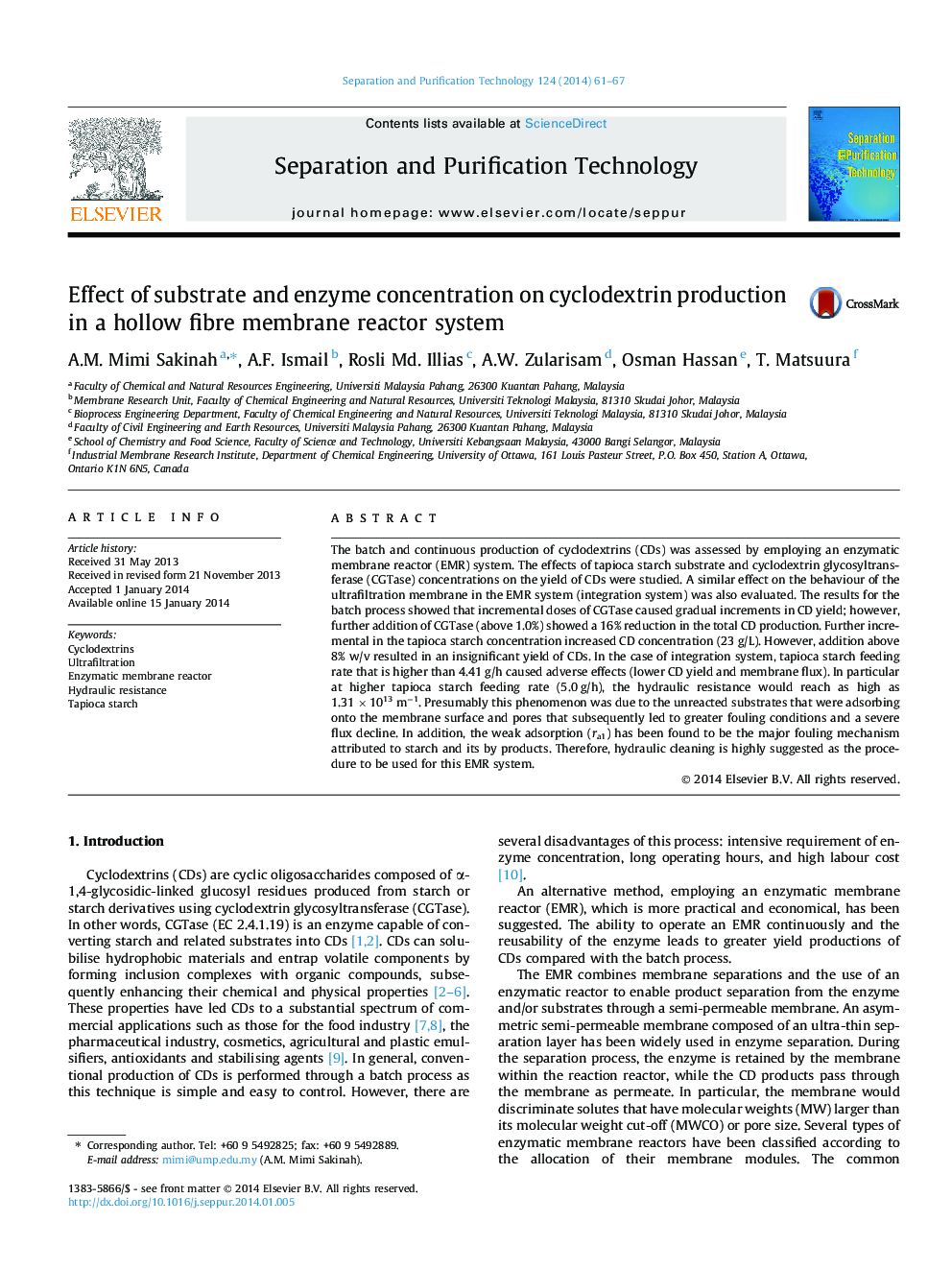| Article ID | Journal | Published Year | Pages | File Type |
|---|---|---|---|---|
| 641199 | Separation and Purification Technology | 2014 | 7 Pages |
•Effects of tapioca starch and CGTase concentrations on the yield of CDs were studied.•Production of CDs in an EMR.•The weak adsorption (ra1) was the major fouling mechanism.
The batch and continuous production of cyclodextrins (CDs) was assessed by employing an enzymatic membrane reactor (EMR) system. The effects of tapioca starch substrate and cyclodextrin glycosyltransferase (CGTase) concentrations on the yield of CDs were studied. A similar effect on the behaviour of the ultrafiltration membrane in the EMR system (integration system) was also evaluated. The results for the batch process showed that incremental doses of CGTase caused gradual increments in CD yield; however, further addition of CGTase (above 1.0%) showed a 16% reduction in the total CD production. Further incremental in the tapioca starch concentration increased CD concentration (23 g/L). However, addition above 8% w/v resulted in an insignificant yield of CDs. In the case of integration system, tapioca starch feeding rate that is higher than 4.41 g/h caused adverse effects (lower CD yield and membrane flux). In particular at higher tapioca starch feeding rate (5.0 g/h), the hydraulic resistance would reach as high as 1.31 × 1013 m−1. Presumably this phenomenon was due to the unreacted substrates that were adsorbing onto the membrane surface and pores that subsequently led to greater fouling conditions and a severe flux decline. In addition, the weak adsorption (ra1) has been found to be the major fouling mechanism attributed to starch and its by products. Therefore, hydraulic cleaning is highly suggested as the procedure to be used for this EMR system.
